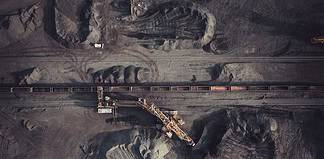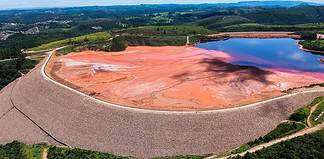SINCE listing on the ASX in 2005, Australian metallurgic coal producer Cockatoo Coal has made the transformation from a junior explorer to an emerging coal producer and is pushing ahead with plans to further establish itself as a significant, independent coal company in coming years.
Despite widespread flooding affecting operational performance in 2011, Cockatoo achieved record production levels at its flagship Baralaba coal mine in Queensland.
For the year ending June 30, 2012, 600,171t of coal was produced at the Bowen Basin pulverised coal injection (PCI) mine: a significant increase from the same period a year earlier, when coal production was just 181,081t.
Achieving a record profit before tax of $22.1 million including a $13.3 million gross profit from coal sales, the company is now well placed to meet expansion objectives that include increasing production at the Baralaba mine to 3.5 million tonnes per annum by 2014.
In addition to the Baralaba mine, the company’s major assets include a 2768mt JORC-compliant global resource portfolio, 4300 square kilometres of coal exploration rights across the Bowen and Surat Basins in Queensland, and $97 million cash.
Major drilling at Cockatoo’s existing tenements in the Bowen Basin throughout the 2011 to 2012 financial year led to an increase in coal reserves and resources, which now sit at 33.4mt and 278mt respectively.
Cockatoo also holds significant interests in metallurgic and thermal coal projects in the Sydney Basin. Cockatoo chief executive Andrew Lawson said other company highlights throughout the year included completing the Baralaba expansion bankable feasibility study and securing the necessary infrastructure allocations to support Cockatoo’s development plans.
“Further, the gazetting of [the] Collingwood and Taroom projects in the Surat Basin as Queensland State significant projects was a major highlight for the company this year,” he said.
Bowen Basin
Cockatoo’s Bowen Basin assets cover 550sqkm of contiguous target areas across a strike length of 92km. Cockatoo anticipates that the ongoing exploration activities will identify development opportunities throughout the region and subsequently increase the quantity of resources and reserves, which currently stand at 33.4mt and 278mt respectively.
Baralaba coal mine
The Baralaba mine, 3km north of the town of Baralaba in the south eastern limb of the Bowen Basin, is part of a joint venture between Cockatoo and JFE Shoji Trade Corporation.
The open-pit operation produces PCI coal (70 per cent) for steel making and thermal coal (30 per cent).
All coal produced is exported via the Port of Gladstone, currently through the RG Tanna Coal Export Terminal.
In June, the company secured a 3mtpa port allocation for the Wiggins Island Coal Export Terminal (WICET) to support the mine expansion, and stated that it expected to start exporting its coal through the terminal in 2014.
WICET is at Golding Point, to the west of the existing RG Tanna and Barney Point Terminals, and will form part of the Port of Gladstone.
Challenges
Cockatoo reported losing substantial operating time at Baralaba during the December 2010 and March 2011 quarters due to Queensland’s extensive flooding.
Localised rain in the June 2012 quarter further impacted production. “On an annualised basis, production still exceeds 600,000t and, production remains forecast to exceed 700,000t,” Mr Lawson said.
“Our 2013 focus is on an organic, ‘no capex’ expansion of the Baralaba PCI coal mine operation to 950,000tpa. “Concurrently, Cockatoo will be preparing for the mine’s step-shift 2014 expansion to 3.5mtpa total output to coincide with the commissioning of Stage 1 of Wiggins Island in October 2014.”
Exploration
Mr Lawson said coal exploration to the north and south of the Baralaba coal mine had already identified opportunities for further expansion of the current operation.
The Baralaba North project has the potential to produce about 1mtpa of product coal for at least 15 years.
At the Baralaba South project, about 6km to the southeast of the town of Baralaba, Cockatoo is assessing the viability of constructing a new open-cut coal mine with the potential to produce about 3mtpa of coal.
The environmental management plan for Baralaba North has been submitted and the company recently began preparation of the environmental impact statement for the Baralaba South project.
In July, the company signed a 10-year contract with QR National to accommodate the increased tonnages expected from the expansion, securing an additional 3mtpa of coal to be railed to WICET.
Surat Basin
Cockatoo’s Surat Basin ventures cover about 4000sqkm in south eastern Queensland.
In March, Cockatoo completed the sale of 49 per cent of its Woori project to Mitsui for $37.25 million. Cockatoo now holds a 51 per cent interest in Collingwood, Taroom and Woori, which form part of the North Surat JV. Mitsui subsidiary MCH Surat Basin Investment holds the remaining 49 per cent interest in the JV, which is managed by Cockatoo.
Total resources for the Surat Basin projects are 1584mt and reserves total 300.8mt, but Cockatoo hopes to increase these figures through active exploration.
During the year pre-feasibility studies were completed for the Collingwood and Taroom open-cut export thermal coal mines, which are capable of producing a combined saleable output of more than 12mtpa.
In June, Cockatoo also secured a 4.2mtpa port allocation for the planned WICET Expansion 1 (WEXP1), which is scheduled for commencement in 2016.
Cockatoo plans to use its WEXP1 allocation to initially load coal from its Collingwood project.
Surat Basin Railway
Development of the Surat Basin projects is dependent on construction of the planned Surat Basin Railway (SBR), which would be the single biggest economic injection ever in the region.
The 214km multi-use rail link between Wandoan, 400km northwest of Brisbane, and Banana, 130km west of Gladstone, could potentially unlock 6.3 billion tonnes of coal reserves in the Surat Basin and would have the capacity to transport up to 42mt of coal per year.
“Cockatoo is currently in commercial negotiations regarding access to the railway for the company’s Collingwood coal project in the Surat Basin,” Mr Lawson said.
NSW projects
In late 2010, Cockatoo acquired interest in two NSW exploration assets: the Bylong and Hume coal projects.
The Bylong project, 300km northwest of Sydney in the Western Coalfield of the Sydney Basin, covers about 10,300 hectares and has a 423mt high-quality export thermal coal resource.
Bylong is wholly-owned by Cockatoo shareholder KEPCO, with a three-year, 30 per cent call option to Cockatoo.
The Hume coking coal project, a JV between Cockatoo (30 per cent) and Cockatoo shareholder POSCO (70 per cent), covers 89sqkm in the Southern Coalfields, about 160km from Sydney.
Total resources at the Hume project currently stand at 451mt with 324.1mt of indicated resources.
Outlook
According to Mr Lawson, despite the weakening of the PCI market price and the high Australian dollar, the Baralaba mine can still remain profitable.
“The positive for Cockatoo is that the current market will lead to rationalisation amongst the higher cost producers and, together with a rebound in steel demand in the short to medium term, Cockatoo’s expansion is likely to come online at the right time to take advantage of the next upswing in the cycle,” Mr Lawson said.
“Likewise, while thermal coal demand is off its historic highs, we believe those fundamentals remain strong.
“The quality of our projects in the Surat Basin and in New South Wales, their proximity to existing and planned infrastructure, and the calibre of our global joint venture partners means we are well placed to take advantage of the ongoing demand for export coal.”
Advertisement








































